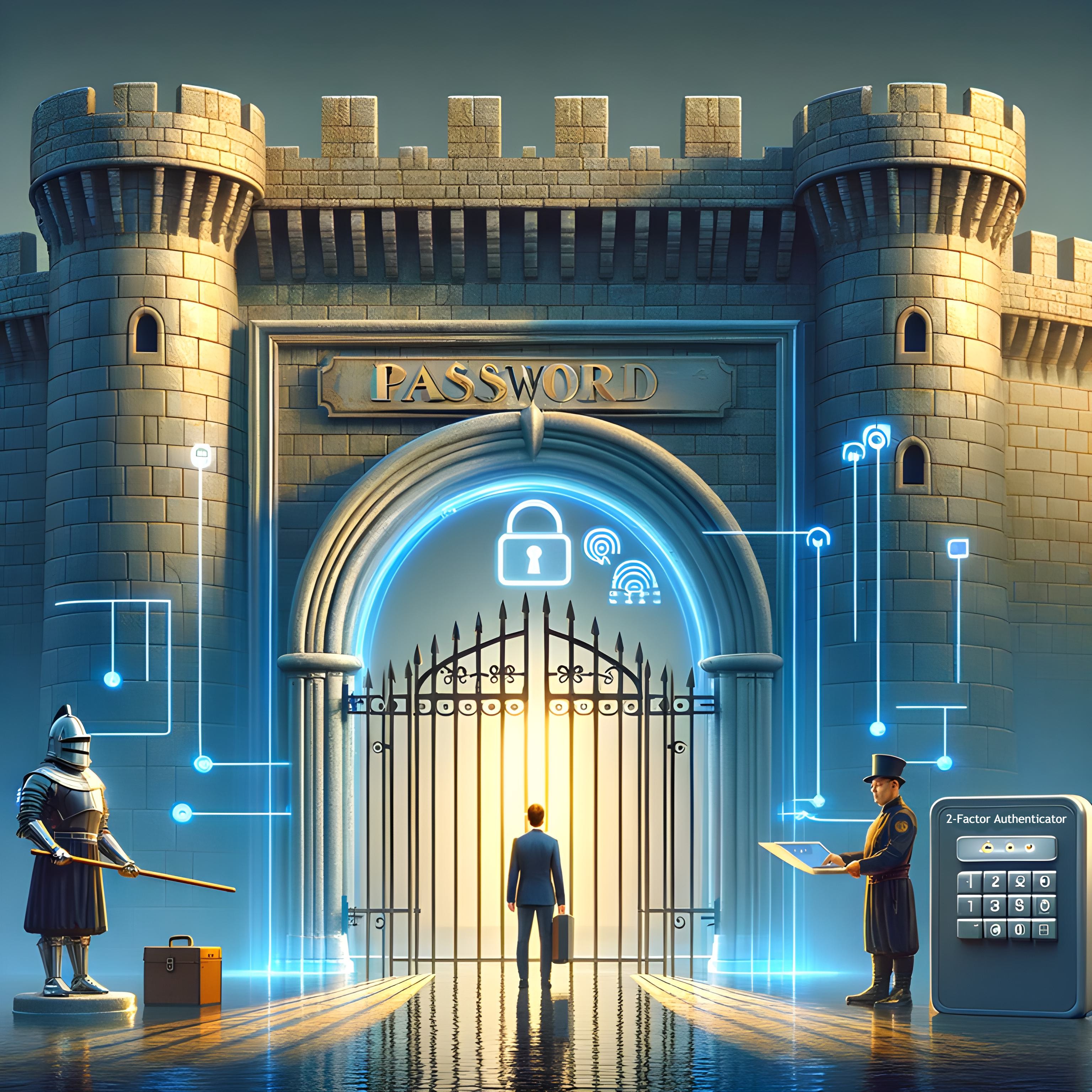Two-Factor Authentication (2FA)
Two-factor authentication adds an extra layer of security to your online accounts by requiring a second form of verification beyond your password.
Common 2FA methods include:
- SMS or Email Codes: A unique code is sent to your phone or email, which you must enter along with your password to log in.
- Authenticator Apps: Apps like Google Authenticator or Authy generate time-based codes that you use to verify your identity.
- Hardware Security Keys: Physical devices, such as YubiKeys, that you plug into your computer or pair with your phone to authenticate your login.
- Biometric Data: Some systems use fingerprints, facial recognition, or other biometric data as a second factor.
Documentation
- NIST Special Publication 800-63B authentication guidelines
- Tutorials from 2FA app providers:
- Hardware Key Providers:
- "A Comparative Long-Term Study of Fallback Authentication" research paper
Metaphorical Example
2FA is like having a second layer of security to protect your digital castle. In addition to your password (the first layer), you need a special code (the second layer) to prove it's really you trying to enter. It's similar to showing both your ID and a secret handshake to gain access to an exclusive club.
Generated using Claude Opus 3.0
Visual Example

Generated using DALL-E 3
This image brings to life the concept of Two-Factor Authentication (2FA) as an additional layer of security for a digital castle, symbolizing a user's online presence. The first layer of defense is represented by a massive door, unlocked with a key (the user's password). Beyond this door lies a second, transparent barrier where a guardian (the 2FA system) verifies a special code from the user, akin to a digital ID or secret handshake, before granting access.